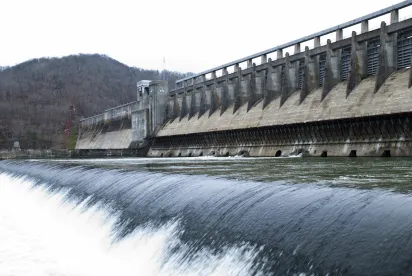On May 25, 2023, the U.S. Supreme Court issued a highly-anticipated decision that significantly narrows the extent of wetlands within the definition of “waters of the United States” (WOTUS), and, therefore, within the jurisdiction of the federal Clean Water Act (CWA). Under the majority opinion in Sackett v. EPA, the Court held that “waters” are limited to “only those relatively permanent standing or continuously flowing bodies of water” that are described as “streams, oceans, rivers, and lakes” and to “adjacent” wetlands that are “indistinguishable” from those bodies of water. Therefore, a wetland is only a WOTUS (and subject to CWA jurisdiction) if: (1) the adjacent body of water is a WOTUS (i.e., “a relatively permanent body of water connected to a traditional interstate navigable water”); and (2) the wetland has a “continuous surface connection” with that water “making it difficult to determine where the ‘water’ ends and the ‘wetland’ begins.” As Justice Samuel Alito stated: Federally regulated wetlands “must be indistinguishably part of a body of water that itself constitutes ‘waters’ under the CWA. . . . Wetlands that are separate from traditional navigable waters cannot be considered part of those waters, even if they are located nearby.”
The Sackett litigation involves Michael and Chantell Sackett, who have been unable to build a house because the U.S. Environmental Protection Agency (USEPA) and the U.S. Army Corps of Engineers (the Corps) determined that a wetland on their Idaho property was a WOTUS, requiring CWA Section 404 permitting. Both the U.S. District Court for the District of Idaho and the Ninth Circuit sided with the Agencies’ WOTUS determination, citing the “significant nexus” test introduced by Justice Anthony Kennedy in his concurring opinion in the U.S. Supreme Court’s seminal Rapanos v. U.S. decision. Under the “significant nexus” test, a wetland is broadly considered to be a WOTUS if it, alone or in combination with similarly situated lands in the region, significantly affects the chemical, physical and biological integrity of navigable waters.
On appeal, the U.S. Supreme Court agreed to examine whether the Ninth Circuit set forth the proper test to determine whether the Sacketts’ wetlands are WOTUS. The Court disagreed with the Ninth Circuit and, instead, upheld the plurality opinion of Rapanos (drafted by Justice Antonin Scalia), which stated that WOTUS should be limited to relatively permanent bodies of water connected to traditional interstate navigable waters and wetlands with a close physical connection to those waters, such that they are indistinguishable from those waters.
The Court’s majority opinion in Sackett was written by Justice Samuel Alito, with concurring opinions written by Justices Thomas Kavanaugh and Kagan. The Justices unanimously agreed that the wetlands on the Sacketts’ property were not WOTUS and that the “significant nexus” test should not be used to determine federally regulated wetlands. Justice Clarence Thomas’ concurring opinion focused on the meaning of “navigable,” and appeared to advocate for an even more narrowed scope of federal regulation. The two other concurring opinions disagreed with the majority regarding the meaning of “adjacent” and asserted that adjacent wetlands should also include wetlands that are “close to, neighboring or not widely separated” from the covered water. Justice Brett Kavanaugh stated that adjacent wetlands mean “more than adjoining wetlands and also includes wetlands separated from covered waters by man-made dikes or barriers, natural river berms, beach dunes or the like.”
The Sackett ruling has immediate, practical consequences. With the elimination of the “significant nexus” test, the extent of wetlands considered to be WOTUS will markedly decrease, thereby decreasing the need for Corps permitting for land development, pipeline construction and other earth disturbance activities. In addition, the Court’s ruling will likely provide more certainty to the regulated community, as to which wetlands are regulated. Generally speaking, a “continuous surface connection” (or the lack of one) is easier to identify than a “nexus” that was often subjectively determined. However, as acknowledged by the majority, “temporary interruptions in surface connection may sometimes occur because of phenomena like low tides and dry spells.” The Court also seemingly acknowledged and addressed a potential “loophole” for federal regulation by noting that “a landowner cannot carve out wetlands from federal jurisdiction by illegally constructing a barrier on wetlands otherwise covered the CWA.”
Even though Sackett pertains directly to wetlands, it also calls into question the tests used for determining whether “waters” are WOTUS. By rejecting the “significant nexus” test, the Court has effectively weighed in on the appropriate (and more narrow) test for determining whether streams and other waterbodies are federally regulated (i.e., whether the waterbody is relatively permanent).
While Sackett narrowed federal regulation of wetlands, it is important to note that state stream/wetland and earth disturbance laws may still apply to specific projects and development. Typically, states broadly define the waters under their jurisdiction. In light of the broad-reaching implications of Sackett, states may seize this opportunity to develop and/or strengthen their stream and wetland permitting programs.
Other WOTUS Developments
The Sackett decision comes just two months after the Biden administration’s new definition of WOTUS (2023 Rule) became effective. The 2023 Rule defines WOTUS using both the Justice Scalia test for relatively permanent waters and adjacent wetlands, as well as the Justice Kennedy “significant nexus” test. The Biden administration expressed concern that the “Supreme Court’s disappointing decision” would take the country “backwards” with regard to the protection of water quality. In a statement issued just after the publication of the Sackett decision, President Joe Biden stated: “My team will work with the Department of Justice and relevant agencies to carefully review this decision and use every legal authority we have to protect our Nation’s waters for the people and communities that depend on them.” We will be watching to see how USEPA and the Corps react in light of Sackett.
The 2023 Rule has already faced three judicial challenges in Texas, North Dakota and Kentucky. These challenges have resulted in a nationwide split in the current definition of WOTUS, with 23 states using the 2023 Rule and 27 states relying on the WOTUS definition that was in effect prior to the 2023 Rule (i.e., the 1986 definition as influenced by the U.S. Supreme Court decisions from the 2000s, especially Rapanos). As a result, West Virginia and Pennsylvania, for example, currently rely on different WOTUS definitions to determine federal CWA jurisdiction.
Even without the extensive changes associated with Sackett, this nationwide split creates inconsistencies on how CWA jurisdiction is applied from state to state. A water may be regulated under the CWA based on the effective WOTUS definition in one state, while the same water would not be federally-regulated under the WOTUS definition effective in another state.
One thing is certain, the landscape for determining federally-regulated waters is changing again, and the regulated community must stay abreast of these changes.




 />i
/>i
